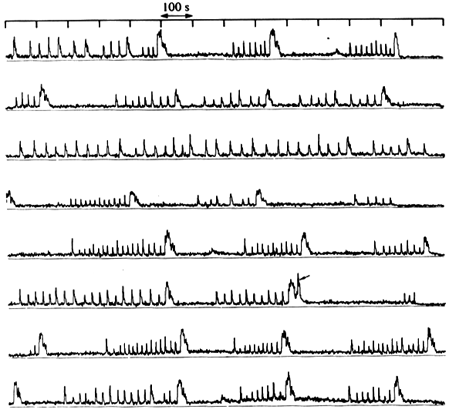Light curve of the Rapid BursterThese eight orbits of SAS-3 observations of the Rapid Burster shows its extraordinary bursting behavior that is classified as type II, together with a single special burst that is in fact an ordinary type I burst (i.e. a thermonuclear event). Note how the smallest bursts are very close together, whereas a big one is always followed by a long gap. (Each panel covers 24 minutes.) Diagram by Walter Lewin, MIT. Reproduced from Charles and Seward, Figure 8-17, Pg. 206.
IMAGES |
By Mission |
Stars |
HEASARC Home | Observatories | Archive | Calibration | Software | Tools | Students/Teachers/Public Last modified: Thursday, 26-Jun-2003 13:48:45 EDT |


